they can tell us about how well prepared we are to meet the climate
challenges and opportunities ahead.
What is the National Climate Risk Assessment?
The NCRA provides Australia with its first holistic picture of the climate risks facing us now and in the future. It uses nationally consistent data to identify and prioritise the most significant climate risks within and across eight key 'systems'. This will help governments, communities, industries, and Aboriginal and Torres Strait Islander peoples to make informed decisions about how to build resilience and adaptation. It will also provide the foundation for the upcoming
National Adaptation Plan.
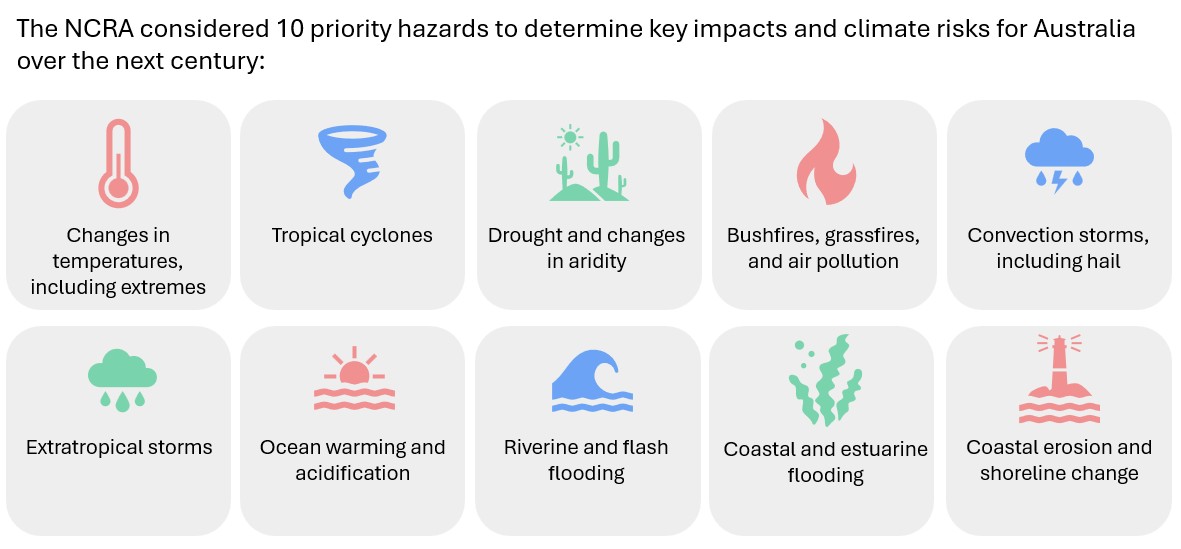
It’s widely understood that different parts of Australia face different types of climate hazards – but importantly, the NCRA also describes how the negative impacts of climate change will affect some people and communities more than others. Those already living with disadvantage are the most vulnerable to climate hazards, while Aboriginal and Torres Strait Islanders will experience distinctive challenges as climate change affects Country.
Climate hazards facing Tasmania
Tasmania, with its relatively mild weather, is often seen as a ‘
climate refuge’ – but the reality is more complex. Climate hazards are already affecting our society, environment, and economy, and the NCRA shows these impacts will likely get worse. Our ecosystems, industries, and communities face unique risks that need to be managed and mitigated. The NCRA identifies several climate hazards relevant to Tasmania across the eight systems.
Aboriginal and Torres Strait Islander Peoples
Tasmania’s Aboriginal population faces multiple intersecting challenges that are likely to be worsened by climate hazards. Changing weather patterns will threaten traditional industries, such as mutton-birding. Connection to Country will be affected by species extinction and rapid changes to the natural environment, with flow-on effects for mental, physical, and spiritual health. Additionally, the state has many
important Aboriginal cultural sites that are likely to be at risk from bushfires, floods, and erosion.
Communities
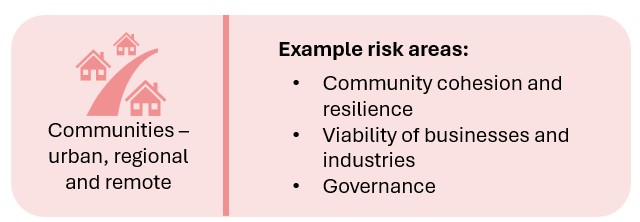
In
rural areas, households and businesses will struggle with unpredictable seasons and economic stress linked to water shortage and crop losses.
Coastal towns like Bicheno and St Helens are already experiencing the effects of erosion and flooding. Residents in urban areas with low tree canopy cover – such as
Newstead and
North Hobart – face negative health and wellbeing impacts due to extreme heat.
Defence and national security

Simultaneous
extreme weather events will test the state government's capacity to respond to multiple emergencies. This may weaken social cohesion and reduce trust in government – potentially creating a cycle of instability. The NCRA also identifies significant potential biosecurity risks, which could threaten Tasmania’s agricultural production and ‘clean, green’ brand.
Economy, trade and finance
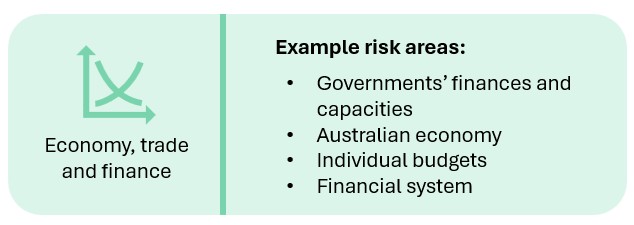
A significant share of the Tasmanian economy is driven by tourism, agriculture, and hospitality. These sectors rely heavily on our natural resources and
unique wilderness, which are highly vulnerable to climate hazards such as floods and bushfires. Any negative impacts on visitor numbers will have flow on effects for
small businesses, while falling agricultural production will affect both our food security and export earnings.
Health and social support
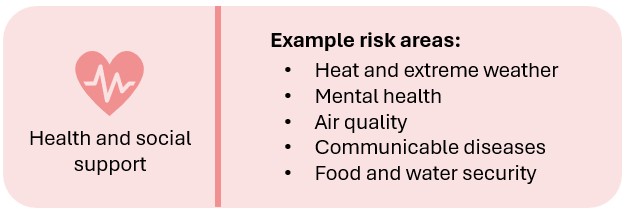
Tasmania already has some of the
poorest physical and mental health outcomes in the country, and our ageing health infrastructure struggles to cope with current demand. These challenges will be exacerbated by climate hazards. For example:
Infrastructure and built environment

More frequent and intense extreme weather events will put pressure on Tasmania’s vital infrastructure, including ports, bridges, drainage systems, roads, and housing. Bushfires and floods will cause more and more damage, while
rising sea levels will threaten coastal towns – which may
displace communities.
Natural environment

Tasmania’s natural assets are already under pressure.
Kelp forests that once supported our coastal ecosystems are collapsing due to warming seas, affecting fisheries and marine biodiversity.
Alpine plants, adapted to cold conditions, are disappearing from mountain regions. On the positive side, Tasmania has some of the best scores on the
Bioclimatic Ecosystem Resilience Indicator (BERI), indicating that our ecosystems are more resilient to the future effects of climate change compared to much of the country.
Primary industries and food

Unpredictable rainfall, increased temperatures, and shifting seasons may force us to change what we grow and where – and the pests and diseases we face. Water stress may force tough choices about
water management in the north of the state. But even as some industries suffer – such as salmon farming – conditions for others may improve, creating new opportunities in forestry, viticulture, and
livestock production.
But there are opportunities
Despite the risks, Tasmania also has huge potential to lead Australia’s transition to a resilient, low-carbon future.
Tasmania’s renewable energy base, built on
hydropower and expanding into wind and solar, provides an early advantage. The state is also developing an economic strategy around new, high-productivity clean industries to support innovation, investment, and sustainable jobs.
In agriculture, Tasmania could become a global leader in
climate-smart food production. This could be achieved through
regenerative farming methods, further improving irrigation using
water-efficiency technologies, and increasing the adoption of
soil carbon management across farms to ensure both economic and environmental sustainability.
Tourism can also evolve.
Eco-tourism and
cultural tourism, led by local communities and informed by Aboriginal knowledge, offer ways to protect the environment.
Tasmania’s relatively small scale can be a strength, allowing change to happen faster than in larger states. With thoughtful investment, Tasmania could show how small jurisdictions can act positively and inclusively when facing global challenges.
Reviewing Tasmania's Climate Change Act
Given the climate challenges and opportunities facing Tasmania, we need strong legislation, policy, and investment to drive ambitious action. Fortunately, the
Climate Change (State Action) Act 2008 is currently under review, and the TPE took the opportunity to put forward
some suggestions for strengthening it based on a comparison with legislation in other states and territories.
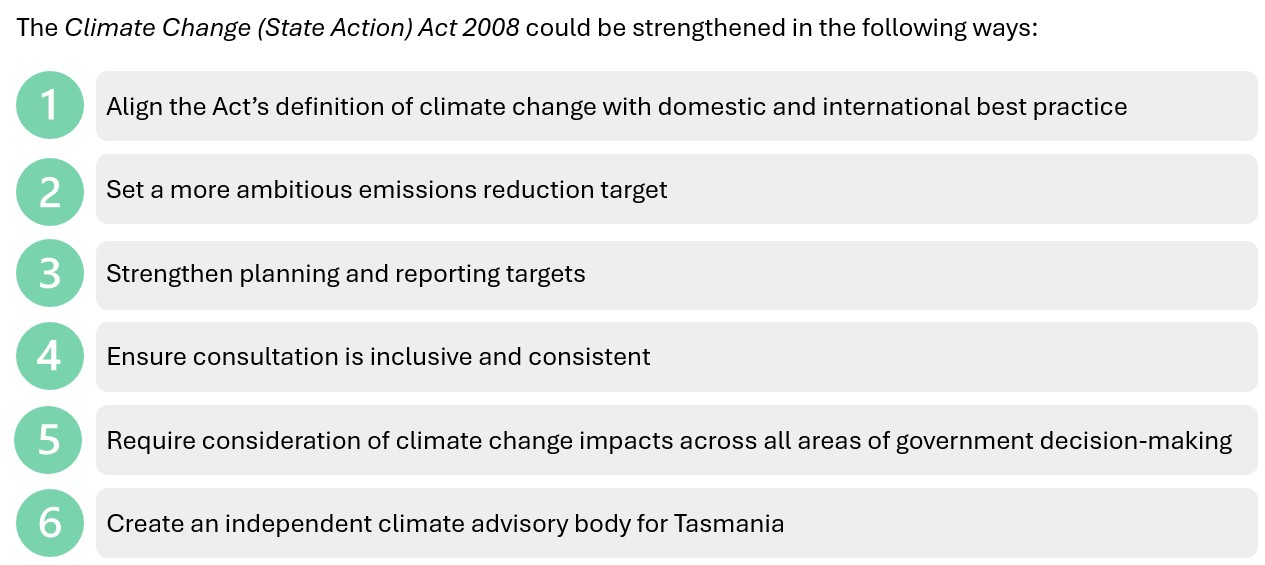
Align the Act’s definition of climate change with domestic and international best practice. Unusually, the Act’s definition of ‘net-zero emissions’ includes the term ‘anthropogenic’, which creates confusion. We recommended that the Act should use a clearer, more practical definition that aligns with other Australian jurisdictions and international guidelines.
Set a more ambitious emissions reduction target. The Act’s current target is to achieve net zero emissions by 2030 – but Tasmania has been net zero since 2014. Meanwhile, our absolute emissions remain largely unchanged, which means we’re falling behind other states in terms of per capita emissions reduction. We recommended that the Tasmanian Government develops a new, more ambitious target for absolute emissions reduction by 2035. This would restore Tasmania’s climate leadership.
Strengthen planning and reporting targets. We recommended that the Act should require sector-level plans to clearly show how each sector will achieve emissions reduction targets and identify opportunities for developing new and emerging low-carbon industries. There is also an urgent need for stronger ministerial accountability, including obligations to explain and respond when targets are missed, and for timely parliamentary scrutiny of climate-related documents.
Consultation needs to be inclusive and consistent. The Act mandates engagement with a broad range of stakeholders in some cases, but it entirely omits Tasmanian Aboriginal people. Their inclusion is essential to uphold principles of justice and equity, and to ensure that policies are informed by their deep environmental knowledge.
Climate change impacts must be considered across all areas of government decision-making. We suggested two potential ways of doing this: writing it into the Act; or developing a ‘Climate Change State Policy’, which would ensure that major land-use, development, resources, and environmental protection/management decisions must consider climate change implications. This whole-of-government approach is critical to ensuring that climate action is consistent and effective.
Tasmania needs an independent climate advisory body. This one is really important. Independent oversight is essential to ensure that climate policy is evidence-based, accountable, and responsive to emerging challenges. So, we recommended that the Act should establish an independent body to provide the Government and Parliament with impartial, expert advice. This would align Tasmania with best practices in other jurisdictions – such as the ACT and New Zealand.
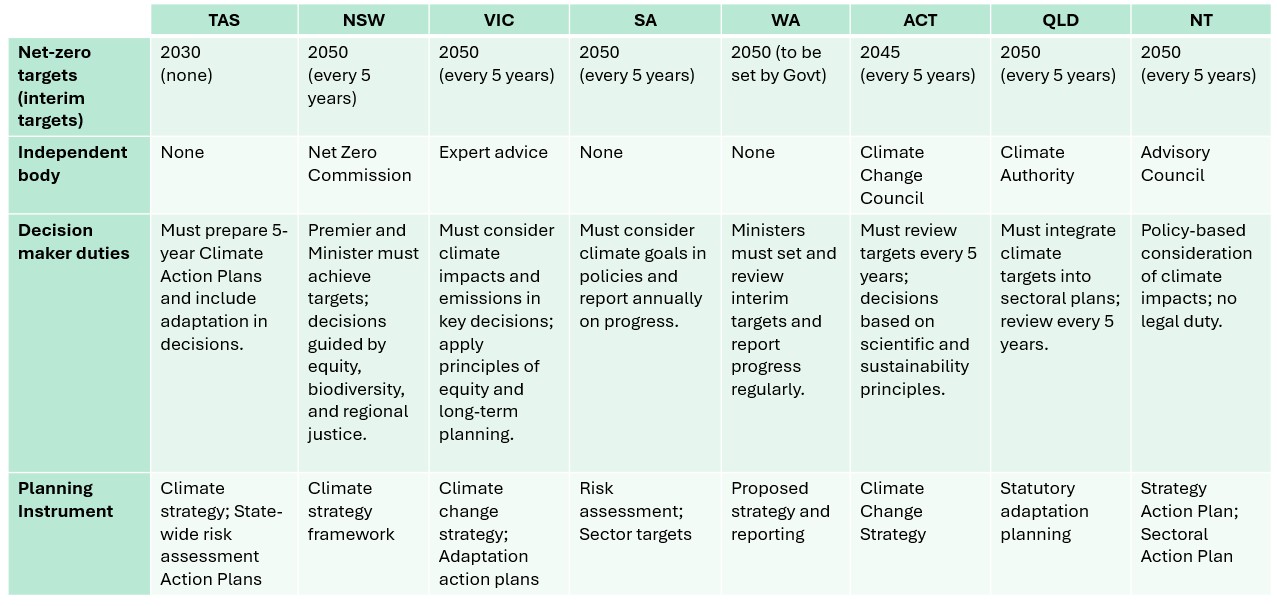
Tasmania’s net-zero status is a remarkable achievement, but it must be a starting point – not an excuse for inaction. We need bold legislative reform, effective policy, and investment that matches the scale of the challenge. We must embrace real, measurable reductions in emissions. We must embed climate action into all government decision making, empower communities through inclusive consultation, and ensure accountability and transparency through effective oversight and regulation. By strengthening the Act, we can demonstrate that Tasmania is truly a leader on climate action.
A moment of choice
Tasmania is Australia’s ‘
natural state’ – a place of ancient forests, rich biodiversity, and premium produce. However, we can’t take that reputation for granted. The negative impacts of climate change are already being experienced by Tasmanians everywhere, from the
Huon Valley to the
East Coast.
The NCRA is a wake-up call, reminding us that the climate risks we face are huge. In this context, it’s more important than ever to ensure that our state’s climate change legislation provides a strong regulatory framework for driving ambitious action to reduce emissions and support resilience. The question isn’t just what it will cost to act. It’s what it will cost if we don’t.
The TPE would like to thank Nazli for her work on this article! Nazli is an MBA student who joined the TPE for several weeks as part of the Tasmanian School of Business and Economics'
Business Placement program.











